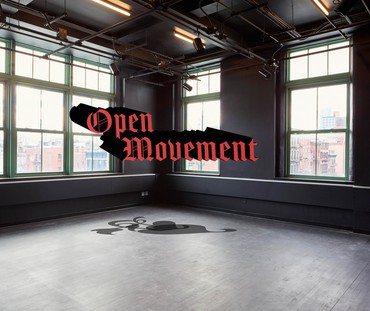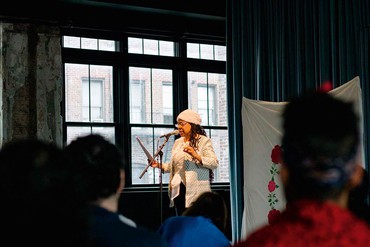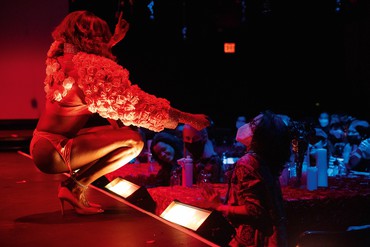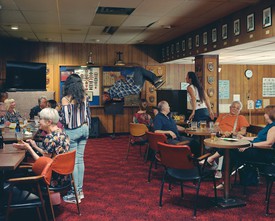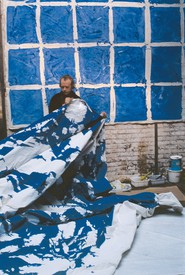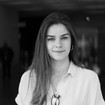
Gillian Jakab is an editor, online and print, of Gagosian Quarterly and has served as the dance editor of the Brooklyn Rail since 2016.

Jenny Schlenzka is the executive artistic director at Performance Space New York. As a curator, she specializes in time-based media and performance. In the past she worked at MoMA PS1 and in the Department of Media and Performance Art at the Museum of Modern Art, New York.
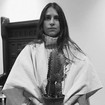
Ana Beatriz Sepúlveda is currently the head of community access and inclusion at Performance Space New York. Her main interests lie in the intersection between art and social justice, with an emphasis on the empowerment and inclusion of underrepresented communities in the cultural sector.
In 1977, when New York City was struggling to recover from financial crisis, a public school in Manhattan’s East Village neighborhood, PS122, was essentially abandoned. Rented out as a community center for $1 a year, the building became home to artists who began rehearsing, performing, and convening under its roof. Eventually, in 1980, the “PS” in “public school” came to stand for “performance space” and the building was launched as an experimental arts hub. Through the 1980s, 1990s, and 2000s, PS122 presented the work and hosted the residencies of Tim Miller, John Bernd, Ishmael Houston-Jones, Jennifer Monson, Karen Finley, Sarah Michelson, and many others. A building renovation and organizational transformation begun in 2011 weathered fits, starts, and setbacks, but finally culminated in 2018 in Performance Space New York, a new phase of the storied institution. The staff had big change in mind for the fortieth anniversary, a project called 02020 that was to entail turning the artist/institution relationship upside down and returning, in a way, to Performance Space’s roots as an egalitarian collective. But the world had even bigger change in store.
GILLIAN JAKABWhat brought each of you to Performance Space?
ANA BEATRIZ SEPÚLVEDAI’ve been here almost four years. I was looking for a job, and at that very moment, Performance Space was hiring an executive development assistant. Beyond that role, I was interested in all the changes that the building and the new team were going through. Since 2018, the year we moved back into the building, we’ve been defining this new time in Performance Space, not only for the institution, our community, and the audiences that join our shows but also for ourselves.
JENNY SCHLENZKAAnd, Ana, you have a very different role from when you started.
ABSYeah, with 02020, an artist-led project for our fortieth anniversary, everything changed. The project was originally an opportunity to get out of my role in the way that I was used to it, and just approach the artists and see how we could work together. Then the pandemic hit, summer protests ensued, and we continued to shift—it was a natural, organic progression. I’m now head of community access and inclusion, a slightly aspirational title in the sense that we still feel like we’re not fully there in terms of access and inclusion and community. It’s become a collective effort to define each of our roles. We’re still in the process of defining what they are, what they serve, and how they fit with everything else we do.
JSIt’s my first job as a director. I’d been a curator for performance, but always in visual-art institutions. Before this I was at PS1 and before that at [the Museum of Modern Art], where I started in the media department, which then became the media and performance department. That’s how I got into performance—I fell into it and then fell in love with it.
Before I got the job at Performance Space I was shown the new spaces there, and when I saw them—you know, on the fourth floor, overlooking downtown—I could really picture what might be possible in these spaces, knowing the history of the institution that I greatly admired.
GJCould you tell me a bit more about the 02020 project? How did you have to adapt during the pandemic?
JSThere are a lot of different perspectives on 02020. From my own, it was a wish to mark our fortieth anniversary, which happened to be 2020. I didn’t want to do the usual, you know, best of the last forty years; we’d already done that with our opening season, which was dedicated to the East Village, its history and present. And in a conversation with the artist and choreographer Sarah Michelson, she suggested to me, Why don’t you give the keys to the spaces to a group of artists, pay them a salary, and see what they come up with? After that, anything else I could think of for that year’s program seemed so much less inspiring. I couldn’t picture what would happen and I really wanted to know, because I feel artists are the people in our culture who lead us to the future.
Then, with Sarah’s help, we invited two collectives and three individual artists. It was a complicated process to get there, but your magazine isn’t thick enough [laughs] to explain all of it. In January 2020, the group of artists—who really did get the keys, or in this case key cards, as well as the entire artistic budget for the year—were invited to pay themselves and then use the rest of the money to program the spaces. In the first month, we spent a lot of time talking to each other. The staff had to reorient because it was very different from what we’d done before, which was commissioning work from artists who would then come with very specific projects. This was way more open. I was also no longer the one making the calls; the artists were deciding what to do. All the communication and hierarchies, everything was up for grabs.
Then, I would say in February of that year, the first projects started. BRUJAS, one of the collectives, made our lobby publicly accessible. They called it “Free Crib” and invited people in the neighborhood to come. They installed a radio show there, Radio Bonita; they had lectures and reading groups and they brought back Open Movement, a program from the PS122 of the 1980s.
So things were taking shape, and then, as everybody knows, in March 2020 the whole world shut down and we went remote. Some of the artists came back in the summer, when the protests for racial justice started. When protesters got stranded in Manhattan, they offered sanctuary space in our theaters. Some of the artists had activist backgrounds, so they were really good at organizing. We became a distribution center, providing the protesters with water, food, first aid kits. Out of that grew a mutual aid project: the doors opened up, a lot of volunteers came, people went in and out, and there were ad hoc barbecues and free teachings and a lot of discussions around abolitionist strategies.
It was an emotional year, full of lessons. Certain things I would definitely do differently, but the one thing that’s clear is that we’re a different institution, and for the most part, for the better. We’re restructuring and we’ve got a new mission statement. We’re right now working on a strategic plan. That’s why we had the town hall yesterday, where we invited the community to come and give input, what they think we should actually be doing and focusing on.
GJWow, a lot of shifts and evolutions. It’s interesting to see what the arts and arts institutions can offer in a time of crisis. Where do the lines blur between civic space and art space? As I heard in the town hall, on the one hand you want to respond to the dire moment and offer your resources to the community, and on the other, you might not have the training to properly offer social services. What were the challenges and opportunities of expanding your work in that way?
ABSThe way I understood the 02020 project, it was about challenging the ways in which we worked and operated and presented work and supported artists and worked as an institution. So adjusting that to the political and health crises was also in sync with the project. In terms of the challenges, I think we’re still going through them, really. We have conversations every week, with staff and some of the cohort members, which is now called the “strategy group.” We’re still working through, What did we learn? What should we leave behind, what should we carry on?
At first we were very idealistic. Then we realized that sometimes we could do more harm than good if we’re not equipped to deal with certain things—we’re not social workers. Toward the end of 02020, those community members who came in because they needed basic life-type support—housing, jobs, health care, et cetera—we tried to assist them in acquiring all of those things, but we realized we needed to ask, What can we do, what do we know? We know how to support artists. So we started having weekly check-ins with the artist-community members to help them develop their artistic careers or paths. We set up studio visits with other artists, curators, producers, et cetera, and we ended up producing a gallery show.
GJThe town hall seemed like an important part of debriefing, taking stock, so you could move forward. I know the new mission statement consists of different affirmations: yes to risk, yes to artists, et cetera, and the last one is unwritten for the time being while you invite suggestions as to what it should be. Have you heard any ideas so far?
JSOne that stuck out to me is “Yes to the neighborhood.” Several others reference change and transformation. I’m really appreciative of the process of people being involved, putting themselves in the position of thinking long-term about this place, and also taking some agency within Performance Space.
GJWhat are you excited about in terms of ongoing and future programming?
ABSIt feels so good just to have our spaces filled up. And especially Open Movement, which I help coordinate on Sundays from noon to six. It’s led by Monica Mirabile, who was one of the cohort artists and is now part of the strategy group. It’s a really special time and space for people to come and move around, usually without an agenda. There are workshops every other Sunday led by teaching artists; they actually get pretty packed. But really, I think the sweetest thing about it is the dynamics that form every week, with people just coming and looking for a sense of community.
Open Room—formerly known as our fourth-floor lobby—will have an installation this year by the artist Dozie Kanu. Since we’re trying to approach it as an open public space, we hope that the community gets to define it. It’s open from Thursdays to Sundays from noon to six, and we’re hoping that it picks up and gets retention and people know that they can just come at any given moment during those hours to either hang out or work or rest.
We’ve already had several community activations. On Saturday there was a screening organized by a collective called Standing on the Corner. A couple of months ago there was a performance matinee on a Thursday afternoon organized by artists from Mexico who were visiting and reached out. That sort of thing is what’s exciting me the most. What about you, Jenny?
IT MEANS A LOT TO ME TO CREATE AN ARTWORK FOR A CITY IN WHICH I AND MY BELOVEDS HAVE SUFFERED AND STRUGGLED, AND TO HAVE THE OPPORTUNITY TO PUSH MYSELF AND THE LIMITS OF TRADITIONAL THEATER.
Ariana Reines
JSWell, as the director, I’m very excited about the new mission statement because it’s so short and simple that everyone gets to remember it, more or less. The first two affirmations, “Yes to artists” and “Yes to risk,” are already in the DNA of this organization. It was founded by artists for artists, and artists are always at the center of what we do, what we think about. And then “risks”—it was always artists who took a lot of risks, be it during the AIDS crisis or just making risky, avant-garde, undefinable work.
Personally I’m always drawn to works that are hard to categorize and pinpoint. I feel like that’s where the most interesting work happens, in these in-between spaces, you know, before everyone else catches up and defines them and puts them in boxes. I think our strength is to invite artists and be very flexible with what they want to do and in which medium they want to work. For the end of our spring season, Ariana Reines—who is one of my favorite people in the world, one of my favorite poets and thinkers—decided to do a twenty-four-hour performance on the theme of justice. Ariana’s very disenchanted—to say the least—with the American justice system. And she’s also an astrologer, and in astrology, justice is ruled by Venus, the planet of beauty and love and femininity. So the whole performance is around the question, How would a justice system that is actually based on the female and on love and on restorative justice, rather than on punishment, look?
She’s followed by another writer from the Bay Area, Brontez Purnell, who’s a successful writer, especially recently.
GJYes, I’m excited to learn more about his performance work.
JSA lot of people who know him as a writer don’t know that he’s a trained dancer. His performance, Johnny Panic and the Bible of Dreams, is based on his favorite short story by Sylvia Plath. The dramaturgy is by Jeremy O. Harris.
And then we have a community event, the annual Kiki Ball. The Kiki scene is like the younger version of ballroom. And the Alliance for Positive Change has a space in our building—they’ve been there since the ’90s, since the AIDS crisis, which very much affected Performance Space—and a lot of their clients are part of the Kiki scene. Since 2018, every summer during Pride month, we’ve staged a Kiki Ball. I think it’s the staff’s favorite.
Lastly, we’re starting a lecture series for kids. The Keith Haring Foundation gave us a big grant. Keith Haring had a studio in this building; many people don’t know that he experimented a lot with performance during his time in the East Village. Part of this grant is a lecture series where luminaries will talk to kids between six and twelve, but of course, you know, younger kids and older kids and grownups can come. And Ariana, for her piece, suggested Cornel West, and he’s agreed to come and talk to kids about justice.
Performance Space, or PS122, has always been a community space/clubhouse, but we’ve renewed our efforts to integrate into the neighborhood, while also understanding that our neighborhood has changed so much and the artists are now living all over the five boroughs. And with Ana’s position now, we have someone on staff whose main focus is to think about how to involve people in an ongoing way. In addition to the programs she mentioned, we have the reading series, and we have Octopus, where we invite mainly artists to curate an evening-length program—
ABSYes, we’ve done the Octopus series and the First Mondays Reading Works in Progress series since 2018, since we moved back into the building. But these are things we’re really putting more energy into, because we see them as a way of tapping into other communities by bringing in different artists. Outside our bigger commissions, these recurring monthly programs are among the very special things we do. First Mondays, for example, is the first Monday of every month. It’s run by the author Sarah Schulman as an after-work type of program she organizes by theme. Then also, more or less every season so far, we’ve been organizing with Sarah a marathon reading. One was with Gloria Anzaldúa, right before the pandemic actually, right before 02020.
GJIt’s nice to hear about the various writers involved, because reading is usually a solitary experience; performance can be more public and communal. I’m curious about the text-and-performance interaction with the reading series, and the two performances in the current season.
JSI think the writers, all three of them, Sarah, Brontez, and Ariana, are really excited about having a live audience. For a writer there’s always this distance between the writing process and the publishing process, and then people read the work by themselves. I can feel, working with writers, how exciting it is to get real-time feedback and to work with live elements. Brontez, for example, when we asked him if he was interested in a commission—and he was really happening in his career, everyone wanted him as a writer—but he was like, “Oh my God, I’m so glad you asked because the pandemic helped me realize, just sitting at home, how much I need physical movement. I need to move my body in order to be able to write.” There’s a real need for that.
It just occurred to me that our new board president, Roxane Gay, is a writer. In the beginning, PS122 was famous for one-person monologues, it did a lot of text-based work. It’s great that this season it’s really coming to the fore.
ABSWe’ve had a lot of different text-based shows in our history. Ishmael Houston-Jones’s Them is a favorite; first performed in 1986 and revived in 2018, it involved text by Dennis Cooper. There was also Annie Dorsen’s work, a big theatrical commission. The premise was that performers were speaking out loud, writing from an Internet chat-room. Every season there are at least a couple of text-based pieces. It feels good, and having these recurring monthly programs is also the best way to be making community and practicing community. You know that the first Monday of the month, you can just go to Performance Space and see something. Octopus is supposed to be more or less in the third week of the month as well. Open Movement is there every Sunday. So there’s a consistent place where people know that whenever they want or can, they can come over.
GJI’m looking forward to coming over.
ABSYes, please.

